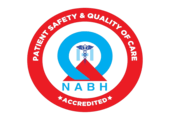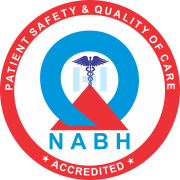Riboflavin Treatment
What is Corneal Collagen Crosslinking with Riboflavin?
Corneal Collagen Crosslinking with Riboflavin (C3R Treatment) or CXL, is a one-time application of riboflavin eye drops to the eye that has shown great results in treatment for Keratoconus. The riboflavin, when activated by approximately 30 minutes of illumination with UV-A light, augments the collagen cross-links within the stroma and so recovers some of the cornea’s mechanical strength.
This US FDA-approved treatment has been shown to slow or arrest the progression of keratoconus, and in some cases even reverse it, particularly when applied in combination with intracorneal ring segments.

What is Keratoconous?
Keratoconus is a progressive disease of the outer transparent layer of the eyeball called the cornea affecting children and young adults. It is characterized by progressive weakening and thinning of the normally round cornea causing it to bulge forward and assume a cone-like shape.
This corneal steepening and irregularity results in the formation of distorted images of objects on the retina & gives rise to blurred vision. It generally affects both eyes but can also occur only in one eye. Collagen crosslinking (C3R treatment) with the help of ultraviolet A (UVA, 365 nm) and riboflavin (Vitamin B2) changes the biomechanical properties of the cornea, increasing its strength by almost 300%. This increase in corneal strength has been shown to arrest the progression of keratoconus in numerous studies all over the world.
How is the treatment done?
The treatment is performed in our operation theatre under completely sterile conditions. Usually, only one eye is treated in one sitting. The treatment is performed under topical anaesthesia (using anaesthetic eye drops).
The surface of the eye (cornea) is treated with an application of riboflavin eye drops for 30 minutes. The eye is then exposed to UVA light for 30 minutes. Hence, the treatment takes about an hour per eye. After the treatment, antibiotic eye drops are applied; a bandage contact lens may be applied, which will be removed by our doctor during the follow-up visit. Protective eye wear, such as sunglasses (also given by us) is to be worn for a few days until complete healing takes place.
Who can benefit from this treatment?
Collagen cross-linking treatment is not a cure for keratoconus, rather, it aims to slow or even halt the progression of the condition. This is important to understand.
Patients may need to continue to wear spectacles or contact lenses (although a change in the prescription may be required) following the cross-linking treatment but it is hoped that it could limit further deterioration in the patient’s vision and reduce the case for keratoplasty. The main aim of this treatment is to arrest progression of keratoconus, and thereby prevent further deterioration in vision and the need for corneal transplantation.
How does cross-linking arrest keratoconus?
Until recently, there was no method to change the integrity and strength of the cornea itself for keratoconus patients. The non-invasive C3R treatment (corneal collagen cross-linking riboflavin) treatment has been proven to strengthen the weak corneal structure in keratoconus. This method works by increasing collagen cross-linking, which are the natural “anchors” within the cornea. These anchors are responsible for preventing the cornea from bulging out and becoming steep and irregular which is the cause of keratoconus
What are the risks and consequences involved?
Very few potential risks associated with this treatment have been reported so far. The ultraviolet light dose used is designed to prevent damage to the cells that line the back of the cornea or the other structures within the eye. No lens opacities (cataracts) have been attributed to this treatment in European trials.
The treatment involves the outer layer (epithelium) of the cornea
- There is therefore discomfort and a short-term haze.
- Other lesser but more common risks include
- Inability to wear contact lenses for several weeks after the treatment
- Changes in corneal shape necessitate the fitting of a contact lens or an occasional change in spectacle correction.
- As is the case with any treatment, there may also be long-term risks that have not yet been identified.
- The increased corneal rigidity induced may wear off over time and further periodic treatments may be required.
Related Search:








